- Bernard Preston homepage
- Greens
- Tabbouleh With Broad Beans
Tabbouleh with broad beans
Tabbouleh with broad beans and kale is really only for the home gardener who loves cooking; both of these from the supermarket are usually horrid, if you get to see them there at all.
Neither broad beans nor kale are actually difficult to grow; what's more they lie top of the list of foods that help prevent and treat Parkinson's Disease and adult-onset Macular Degeneration. If they are that important, then why are they so rarely found in the supermarket? Because unless they are young and freshly-harvested they are both perfectly horrid.
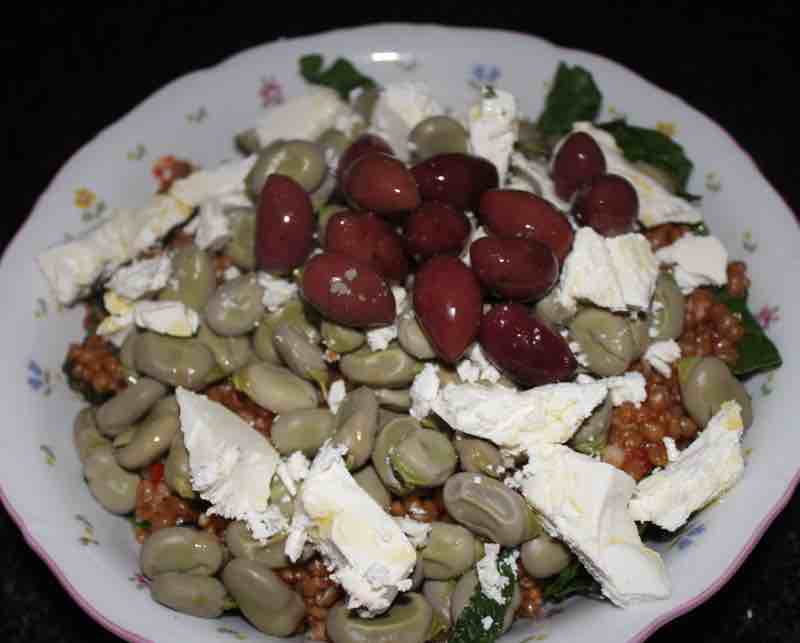
Level: Simple
Active time: less than 30 mins.
Serves 4
Keep it simple is our motto. We avoid complex and difficult recipes; slow food, cooked fast.
INgredients
- 1/2 cup of wheat
- 2 handfuls of young kale or spinach leaves
- 1 cup of cooked broad beans or chickpeas
- Half a dozen bright-red peppadews or a slither of a hot chili.
- 4 green onions or a large handful of chives
- 1 cup of parsley
- 1/2 cup of thinly-sliced fresh mint
For the dressing
- 1/2 cup of olive oil
- 1 lemon or lime
- 2 TBSP spring water
- 1 tsp natural honey
Topping
- 1 cup of feta cheese
- 1/2 cup of olives
Go for it
- Wash the wheat kernels and allow them to soak for half an hour; simmer for 20 mins in 2 cups of lightly-salted spring water. Drain.
- Blend together the olive oil and the peeled, deseeded lemon or lime; with a touch of the zest and the honey. Pour over the hot, cooked wheat kernels.
- Simmer the young broad beans in lightly-salted water for five minutes.
- Remove the stalks and seeds from the peppadews.
- In a large bowl mix together the finely chopped kale leaves, green onions and peppadews.
- Mix the parsley and mint into the dish.
- Stir in the wheat kernels soaked in the dressing, and then the cubed feta cheese and olives.
- Spread the broad beans over the wheat.
Warn your guests that the olives have pits; it would spoil the friendship if someone cracked a tooth and made their dentist's day. Encourage mindfulness whilst enjoying the meal; savour the flavours and chew everything slowly.
Surprisingly chewing your food thoroughly actually delays the onset of dementia; I'm not kidding.
It's not essential since your tabbouleh with broad beans is made with wheat, but a slice of artisan bread[4] and butter to mop up the juices would not go amiss; you can mix the dough in only five minutes if you have a baking machine.
Whole grains
We are bombarded these days with nutritional advice from the gurus to turn to whole grains, the banting folk excepted.
What no one tells you is just how hard it is to get whole grains, corn on the cob and brown rice being the exceptions. Your tabbouleh with broad beans is another possibility.
As is artisan bread[4] made with 100% flour, but for that you need a mill.
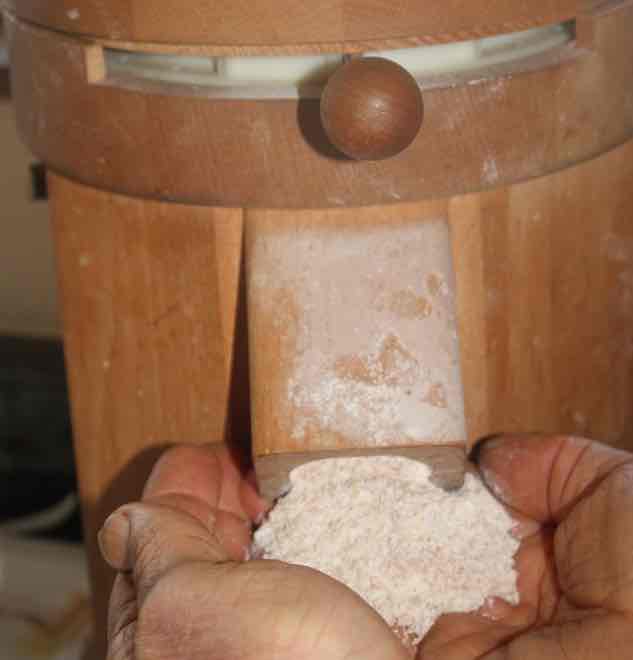
Good electric mills are quite expensive. They are only for those who are serious about baking and better health; but artisan bread and tabbouleh with broad beans is awesome.
Tabbouleh is generally made with bulgar wheat but it's tricky to make, so we are taking a short cut. Nothing is lost, neither the flavour nor the nutrition; just boil the whole grains. There is no need to dry and mill them.
Kale
One can use any one of a number of greens for your tabbouleh with broad beans. We have chosen fresh young kale leaves because they have more lutein than any other vegetable. Over five million Americans are needlessly blind, and many more partially-sighted because of a deficiency of this important phytonutrient.
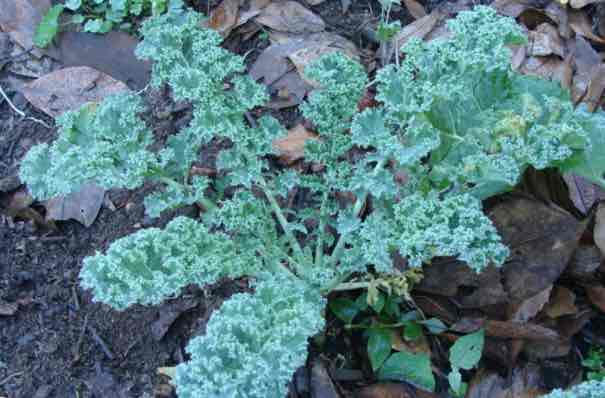
You are unlikely to find fresh, young leaves in the shop; you have to grow them yourself. The health benefits of kale is a subject everyone should be familiar with.
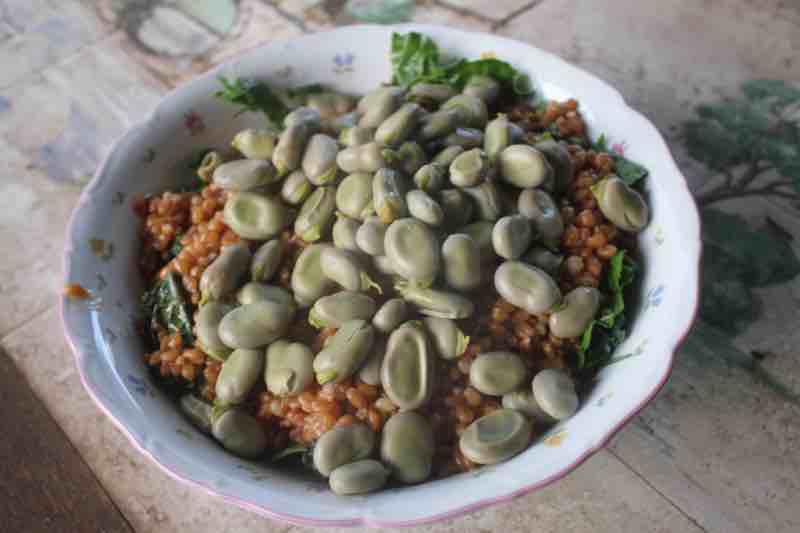
Broad beans
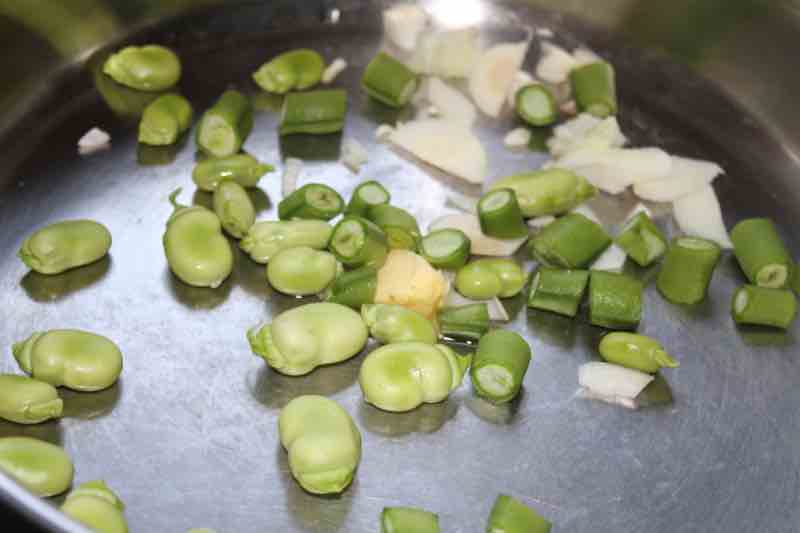
Broad beans, also known as favas, are almost unique in having a phytonutrient called levodopa. It is found in the seeds, in even greater amounts in the pod and also in the young shoots. It is able to cross the blood-brain barrier and ameliorate the most serious neurodegenerative diseases.
Understanding the question are favas only shell beans will give you a better understanding; don't discard the young pods.
In the recipe above we give you the option of using the beans only, or the whole young pod; or a mixture of the two.
Dopamine is one of the most important neurotransmitters; a deficiency causes the mental decline, guarded gait and tremors of Parkinson's disease.
If you cannot plant broad beans in your own garden then use chickpeas instead; they have little or no L-dopa alas.
Cooking chickpeas is a breeze and far cheaper than from cans; no added salt, sugar or preservatives either. We then freeze them so that they are readily available.
Peppadews
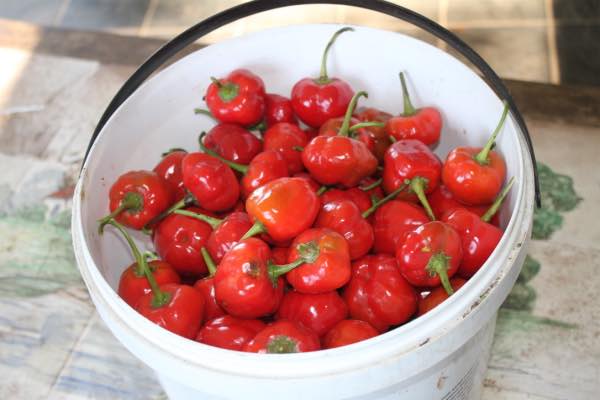
Adding some bright red chilis to your tabbouleh with broad beans gives it yet another colour and also the anti-inflammatory effect of the phytonutrient capsaicin; it helps to ameliorate painful joints and muscles and even the itch of shingles.
They are not difficult to plant by the way. Growing peppadews is for every gardener.
Natural honey
Honey is one of the foods most abused by manufacturers. Once it has been heated and strained of all the pollen is becomes highly glycemic; fattening and making you prone to diabetes.
Natural honey in the main has a low glycemic index[2] with some exceptions; get it from the apiarist around the corner.
Retrogradation
Are grains and beans very starchy and should we be avoiding them? It's an important question to consider if you want to live a long and healthy life. Cooling carbohydrates overnight causes the amylopectin to fold in a way that makes it more difficult for the enzymes to break the molecules down; the glucose is released more slowly. This process is known as retrogradation[3].
It's interesting that in the longevity diet both whole grains and legumes are encouraged. That makes things very difficult for passionate carnivores who are encouraged to avoid the pair of them; they are more prone to pancreatic cancer[5].
Use the lemon pulp
More than half of the important nutrients like vitamin C and limonin in citrus are found in the pulp; thus we very rarely use lemon juice only. In most instances we should enjoy the whole food. Just the beta-cryptoxanthin makes it worthwhile; the most powerful micronutrient known to help prevent senility.
Tabbouleh with broad beans
So there you have it; whole grains and beans with added greens and chilis. It is a smorgasbord of better health. There is strong research that those enjoying at least 7 different coloured foods daily have a 35% lower all-cause of death; that's massive.
In this dish there are eight coloured foods; the amount doesn't matter so just a sprig of parsley would count.
"Let thy food be thy medicine, and medicine be thy food."
Hippocrates (460 - 370 BC)
When browsing use right click and "Open Link in New Tab" or you may get a bad gateway signal.
Spicy peppadew mead
Make your meal truly avant-garde by turning your hand to making this spicy peppadew mead. I won't pretend this is easy; brewing and baking with yeast are arts requiring much patience and practice.
Just as tabbouleh with kale and broad beans is really for gardeners, brewing mead is only for beekeepers.
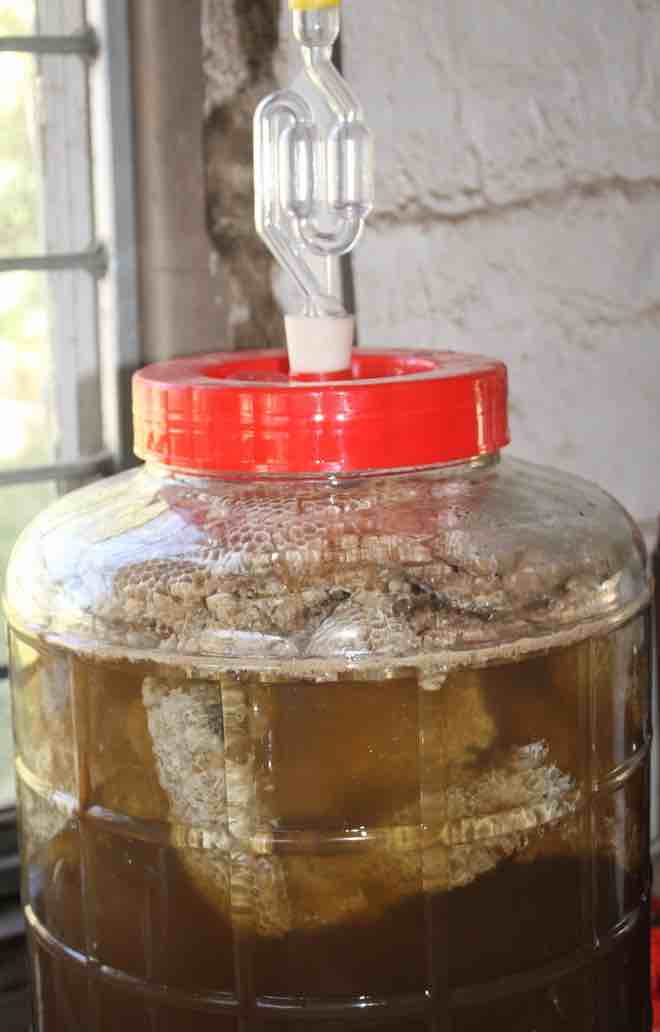
These are what we call Cyan Zone activities; caring for yourself and the environment. Insects are in serious trouble and we are utterly dependent on them. How to start beekeeping is not as complex as you might think; like all hobbies you can do it in minute detail or fairly crudely to provide quality natural honey.
This may seem utterly remote and over the top to you; it was for us too when we began the green journey. Rome was not built in a day, nor will turning your home into a Cyan Zone, but I can promise you that it has been the most rewarding thing we have ever done.
One of the spinoffs is that in our eighth decade we take no medication whatsoever. Committing time and energy to the well-being of ourselves and the planet has meant almost no sickness; viruses knock us for a few days and are soon over.
Newsletter
Our newsletter is entitled "create a cyan zone" at your home, preserving both yourself and Mother Earth for future generations; and the family too, of course. We promise not to spam you with daily emails promoting various products. You may get an occasional nudge to buy one of my books.
Here are the back issues.
- Lifestyle and ideal body weight
- What are ultra-processed foods?
- Investing in long-term health
- Diseases from plastic exposure
- Intensive lifestyle management for obesity has limited value
- A world largely devoid of Parkinson's Disease
- The impact of friendly bacteria in the tum on the prevention of cancer
- There's a hole in the bucket
- Everyone is talking about weight loss drugs
- Pull the sweet tooth
- If you suffer from heartburn plant a susu
- Refined maize meal and stunting
- Should agriculture and industry get priority for water and electricity?
- Nature is calling
- Mill your own flour
- Bake your own sourdough bread
- Microplastics from our water
- Alternative types of water storage
- Wear your clothes out
- Comfort foods
- Create a bee-friendly environment
- Go to bed slightly hungry
- Keep bees
- Blue zone folk are religious
- Reduce plastic waste
- Family is important
- What can go in compost?
- Grow broad beans for longevity
- Harvest and store sunshine
- Blue zone exercise
- Harvest and store your rainwater
- Create a cyan zone at your home
Did you find this page interesting? How about forwarding it to a friendly book or food junkie? Better still, a social media tick would help.
- Bernard Preston homepage
- Greens
- Tabbouleh With Broad Beans
Address:
56 Groenekloof Rd,
Hilton, KZN
South Africa
Website:
https://www.bernard-preston.com